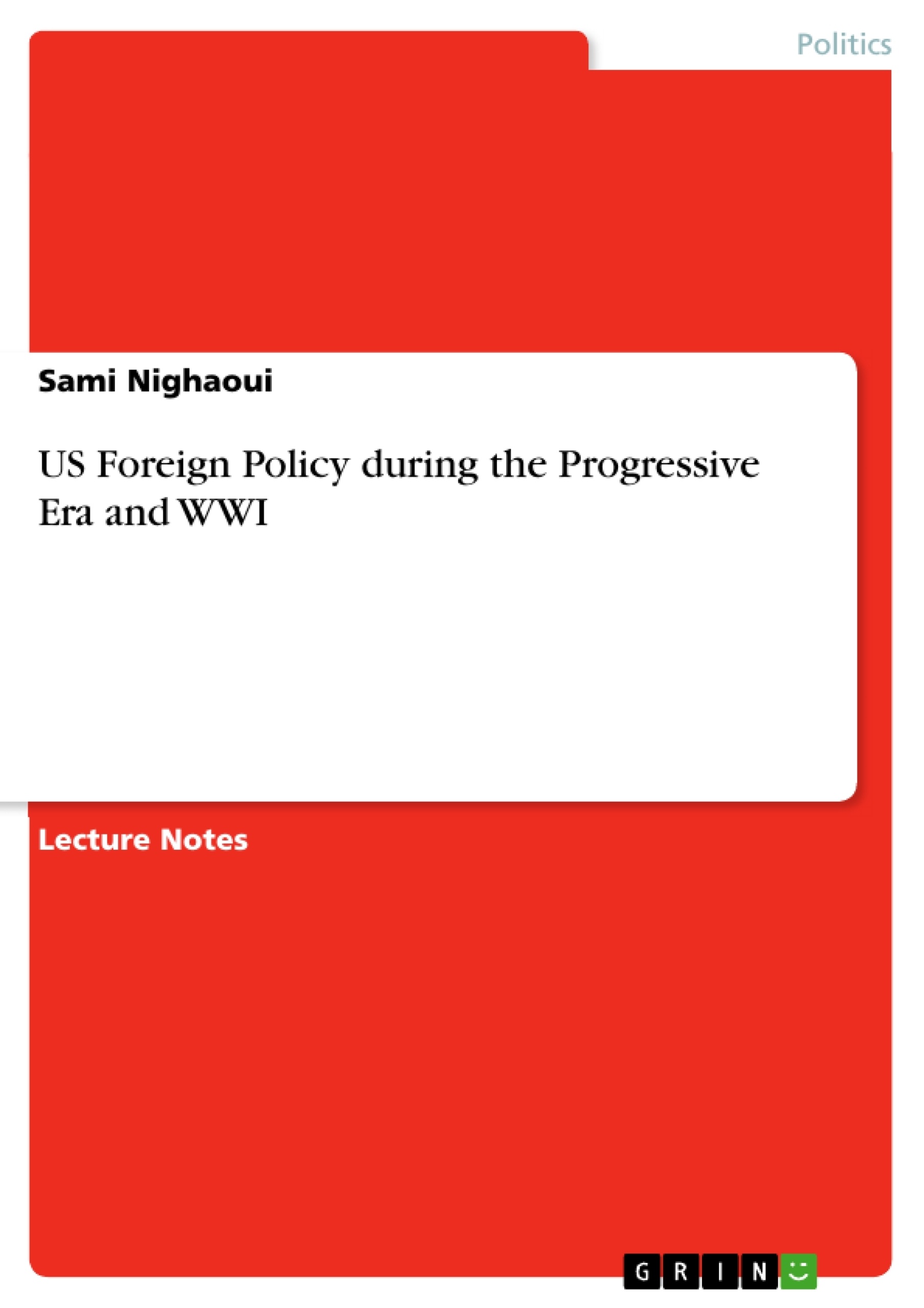America’s interest in territorial expansion could be traced down to the purchase of Alaska which was purchased and annexed in 1867. The purchase was considered as a “magnificent bargain” (591.000 sq miles for 7 million dollars) by the US government of the time but the territory was scoffed at as a worthless “icebox” by the critics of Secretary of State William Seward who cut the deal. By the end of the century, American elites came to consider territorial expansion as part and parcel of America’s its historic role of civilizing the “primitive” peoples around the world. After all, the United States was, by now, a vast country with a history of confrontations (the Civil War) and a potentially powerful navy.
Inhaltsverzeichnis (Table of Contents)
- Foreign policy during the Progressive Era
- The Spanish-American War (1898)
- American early expansionist prospects
- The Spanish war (1898)
- The \"Big Stick\" policy and the building of the Panama Canal
- World War I (or the Great War): 1914-18
- The Great War: The immediate causes
- Origins of American involvement in the war
- The Spanish-American War (1898)
Zielsetzung und Themenschwerpunkte (Objectives and Key Themes)
This text explores the foreign policy of the United States during the Progressive Era, focusing on the nation's involvement in the Spanish-American War and World War I. It aims to analyze the factors that led to America's increasing involvement in international affairs, the consequences of its actions, and the broader context of global politics during this period.
- American Expansionism and Imperialism
- The Role of the Monroe Doctrine
- The Rise of the United States as a World Power
- The Impact of International Conflict on American Society
- The Evolution of American Foreign Policy During the Progressive Era
Zusammenfassung der Kapitel (Chapter Summaries)
The first chapter examines the roots of American expansionism in the late 19th century, culminating in the Spanish-American War. It analyzes the motivations behind the United States' acquisition of territories like Alaska and the Philippines, as well as the consequences of the conflict for American foreign policy. The second chapter focuses on World War I, exploring the events that led to American involvement, the impact of the war on American society, and the enduring legacy of the conflict on American foreign policy.
Schlüsselwörter (Keywords)
Key terms and concepts explored in this text include: American expansionism, imperialism, the Spanish-American War, the Monroe Doctrine, World War I, the Triple Entente, the Triple Alliance, American foreign policy, and the rise of the United States as a world power.
- Quote paper
- Sami Nighaoui (Author), 2015, US Foreign Policy during the Progressive Era and WWI, Munich, GRIN Verlag, https://www.grin.com/document/302904




